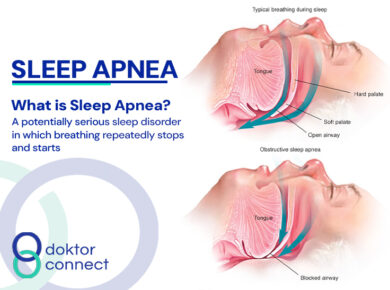Compliments of the season to you and yours!! It’s that time where the food is in abundance (well before some of us reading start the yearly religious fasting.) It is also that time where food can go through the wrong passage and we know that Choking is the 4th leading cause of unintentional death. Knowing practical steps to help someone noticed to be choking will forever be an important knowledge and this is why you should read along.
Choking due to inhalation of a foreign body usually happens while eating; also medically known as café coronary (who doesn’t like learning new words?) Choking does not need to happen during formal eating, a simple snack or chewing gum can be inhaled. Commonly retrieved objects include seeds, nuts, bone fragments, medical instrument fragments, nails, small toys, pins, dental appliances, etc.
Chocking is a physiological response to sudden obstruction of the airways. So in the neck, there is a windpipe (larynx/trachea) which is connected to the lungs for breathing and airway, and just behind it, there is also the food pipe where food passes through to the stomach. Simple yeah?
Who Does Choking Affect?
Choking is more common among males; with the ratio to females being 2:1. It is a true medical emergency in adults, with a mortality rate of a little above 3%
Children, especially those aged 1-3 years are more at risk because of the tendency to put everything in their mouths and the way the chew
Adults who have undergone surgeries in the mouth region, are intoxicated or have been sedated, have oral appliances or neurological/psychiatric disorders are also more at risk of choking
It is also more common in the elderly because of the likelihood of absence of teeth
How To Recognise Someone Choking
Early recognition is an important step to having a successful resuscitation. Simply asking; “are you choking?” gives the individual an opportunity to respond by nodding when they are unable to speak.
It is also likely to occur if:
- The episode happens while eating suddenly
- For an adult, they may clutch their neck or point to the throat
- In children, there may be clues e.g. seen eating or playing with small objects before the onset
Continue reading to find out how to help.
What are the Common Symptoms?
For Mild Obstruction: Unable to breathe, cough or speak well. In children, they may be crying or have a loud cough
In Severe Obstruction: wheezy breath sound, silent cough, bluish discoloration of the body (a condition known as cyanosis), inability to breathe or speak, unconsciousness
How Can You Help?
- In Mild Obstruction; simply encourage the person choking to continue coughing and monitor for deterioration
- Severe Obstruction In A Conscious Patient; For Adults perform the Heimlich Maneuver

- Stand behind them and slightly to one side. Support their chest with 1 hand. Lean them forward so the object blocking their airway will come out of their mouth, rather than moving further down.
- Give up to 5 sharp blows between their shoulder blades with the heel of your hand. The heel is between the palm of your hand and your wrist.
- Check if the blockage has cleared, if not give up to 5 abdominal thrust

4. Place your arms around their waist and bend them forward.
5. Clench 1 fist and place it right above their belly button.
6. Put the other hand on top of your fist and pull sharply inwards and upwards. Repeat this movement up to 5 times. If the person’s airway is still blocked after trying back blows and abdominal thrusts, get help immediately
Do not give abdominal thrust to pregnant women
There is a slight modification in the above for children;

- Sit down and lay your baby face down along your thigh or forearm, supporting their back and head with your hand. If this isn’t possible, support your child in a forward-leaning position
- Give up to 5 sharp back blows with the heel of 1 hand in the middle of the back between the shoulder blades and reassess.

- After unsuccessful back blows, use chest thrust for infant less than 1 year or abdominal thrust if above one year.
- Chest Thrust: Lay your baby face up along the length of your thighs, find the breastbone and place 2 fingers in the middle then give 5 sharp chest thrusts (pushes), compressing the chest by about a third. If you see the object become dislodged, stop giving chest thrusts
- Abdominal Thrust: Stand or kneel behind the child, placing your arms around the torso. Place a clenched fist between just like the picture of the adult above, grasp this hand with your other hand and pull sharply inwards and upwards, repeating up to five times
What To Do If Unconscious;
For an adult, lower the patient to the floor, call an ambulance or ask for help to take the individual to the nearest hospital and begin CPR
In children, also place on a flat surface, call for help, open the mouth and look for any obvious object. If seen, attempt to remove it with a single finger sweep. If not successful, begin CPR while the arrangement is being made for an ambulance or going to the nearby hospital
How To Prevent Choking While Eating
- Don’t exercise while eating
- Chew properly
- Avoid getting drunk
- Cut grapes and don’t give peanut to small children
In summary, there is a need to become familiar with all what we’ve learnt so far as this maneuvers have a very good success rate (almost 90%) when used before getting to the hospital.
Remember, doktorconnect is here for you if you need to speak with a doctor.



